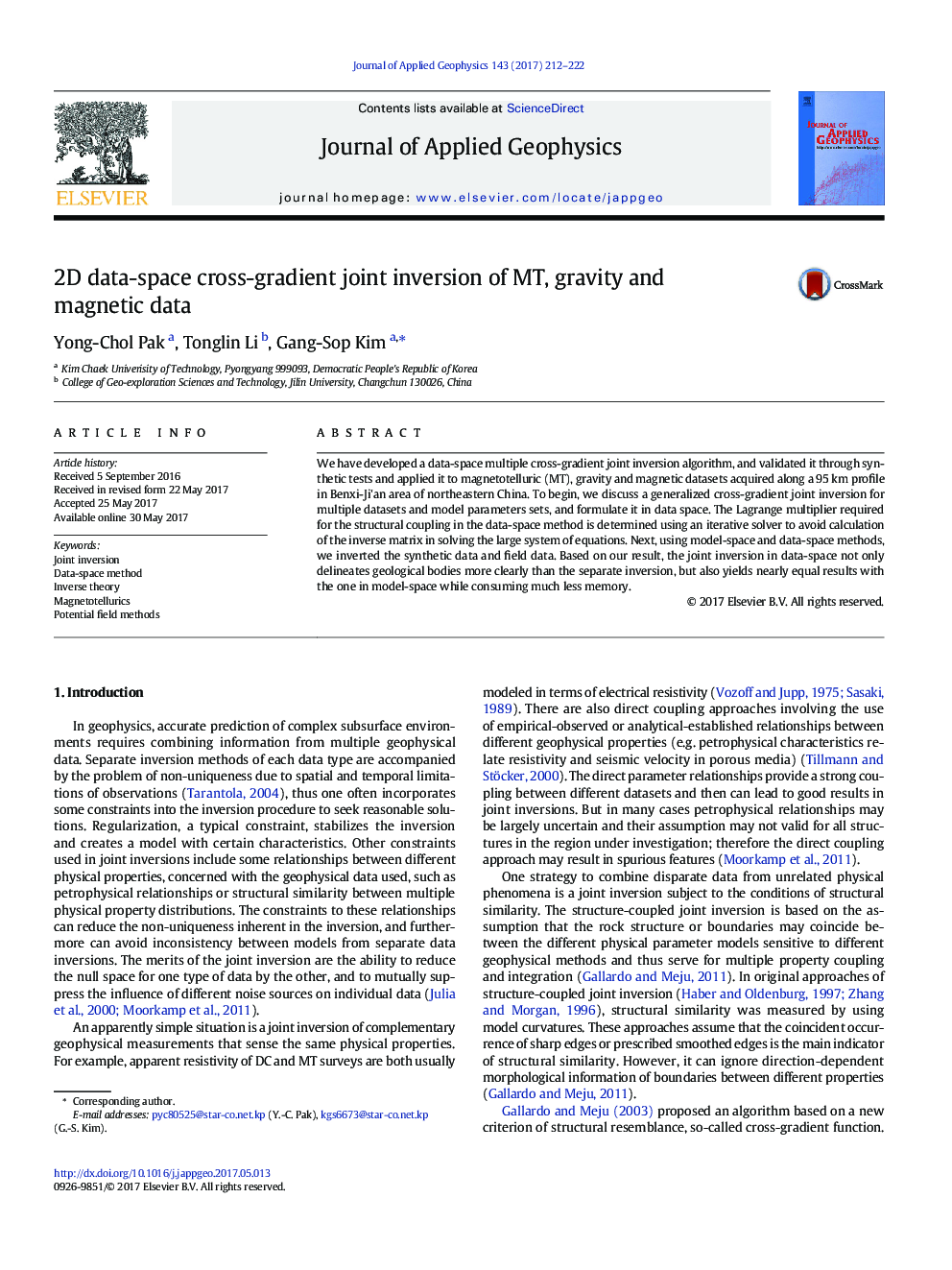| Article ID | Journal | Published Year | Pages | File Type |
|---|---|---|---|---|
| 5787137 | Journal of Applied Geophysics | 2017 | 11 Pages |
â¢We presented data-space cross-gradient joint inversion.â¢Object function is generalized for any sensitivity relationship of data and models.â¢Iterative solver is effective in determining Lagrange multipliers.â¢The field example of MT, gravity and magnetic data was presented.â¢Joint inversion in data space remarkably saves computer memory.
We have developed a data-space multiple cross-gradient joint inversion algorithm, and validated it through synthetic tests and applied it to magnetotelluric (MT), gravity and magnetic datasets acquired along a 95Â km profile in Benxi-Ji'an area of northeastern China. To begin, we discuss a generalized cross-gradient joint inversion for multiple datasets and model parameters sets, and formulate it in data space. The Lagrange multiplier required for the structural coupling in the data-space method is determined using an iterative solver to avoid calculation of the inverse matrix in solving the large system of equations. Next, using model-space and data-space methods, we inverted the synthetic data and field data. Based on our result, the joint inversion in data-space not only delineates geological bodies more clearly than the separate inversion, but also yields nearly equal results with the one in model-space while consuming much less memory.
